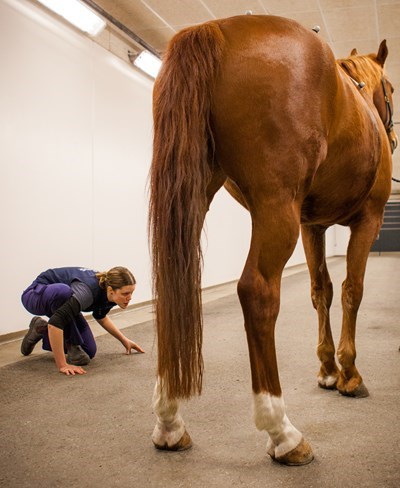Lameness is a major problem in our riding horses. Today, it is the most common presenting complaint in horses being examined by veterinarians. However, it has been shown that many horses that are deemed as healthy – and have subsequently not been treated for lameness recently – still display asymmetric movement patterns to the same degree as low degree lameness cases that we see and treat in the clinic.
Currently, we are lacking the knowledge to decide which horses have underlying pain and pathology vs. which horses may have a natural biological variation in their movement patterns. With the help of objective motion analysis systems (based on sensors or cameras), we measure movement asymmetry of horses in the clinic and in the field. The systems measure the vertical movement of the head, withers, and pelvis. Movement asymmetry of these anatomical landmarks have been shown to be particularly sensitive to detect lameness.
It has been noted that when horses become lame in one limb, this may lead to asymmetries in the opposite part of the body. For example, a primary lameness of the horse’s hindlimb may induce a nodding of the head that could look like a primary lameness of the forelimb at visual subjective inspection. It is therefore important that the veterinarian does not mistake this compensatory lameness as a primary lameness to avoid erroneous investigation of the wrong limb.
It is our hope that the knowledge base produced by our studies can aid us to be more efficient and quicker to discern whether a horse is exhibiting a natural asymmetry or whether it suffers from lameness (pain) and if so, to be able to identify the limb with the primary lameness. With such improved knowledge, we would be able to initiate the correct treatment at an earlier stage which would hopefully lead to a better prognosis.
